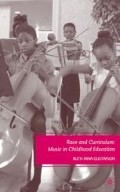Abstract
I begin with the body and its expression of cultural nobility. In a contrast between listeners that has been illustrated in a lighthearted way in a Peanuts cartoon strip, we have two contrasting views of embodied responses to music. The first window of the cartoon has Schroeder telling Lucy he has a recording of Brahms’ Fourth Symphony. When Lucy asks what he is going to do with it, he replies that he will listen to it at home. Lucy asks whether he is going to dance. “No, just listen.”1 Flabbergasted, Lucy asks if Schroeder will march, whistle, or sing. Schroeder says again that he is only going to listen.
Access this chapter
Tax calculation will be finalised at checkout
Purchases are for personal use only
Preview
Unable to display preview. Download preview PDF.
Notes
The literature on the discipline of school/church behavior in both England and New England loosened strictures against music and dance in the late eighteenth century. Even though prohibitions became increasingly rare, extroverted dancing remained a social evil. See Southey, The Doctor and Etc. See also Preston Cummings, A Dictionary of Congregational Usages (Boston: S. K. Whipple, 1853).
For an expanded discussion of the dynamics of political power in secularism, see Talal Asad, Formations of the Secular: Christianity, Islam and Modernity (Palo Alto, CA: Stanford University Press, 2003), 134–40.
Butler, Theories of Subjection, 99. “Within speech act theory, a performative is that discursive practice that enacts or produces that which it names. According to the biblical rendition of the performative i.e. Let there be light! it appears that it is by virtue of the power of a subject or its will that phenomenon is named into being.” The notion that language summons a fictive world that can displace or augment the “real” has been explored extensively in literary criticism as well. See Esterhammer, The Romantic Performative, and Wolfgang Iser, The Fictive and the Imaginary: Charting Literary Anthropology (Baltimore: Johns Hopkins University Press, 1993).
Copyright information
© 2009 Ruth Gustafson
About this chapter
Cite this chapter
Gustafson, R.I. (2009). Fabricating the Future Citizen. In: Race and Curriculum. Palgrave Macmillan, New York. https://doi.org/10.1057/9780230622449_1
Download citation
DOI: https://doi.org/10.1057/9780230622449_1
Publisher Name: Palgrave Macmillan, New York
Print ISBN: 978-1-349-37532-5
Online ISBN: 978-0-230-62244-9
eBook Packages: Palgrave Social & Cultural Studies CollectionSocial Sciences (R0)

